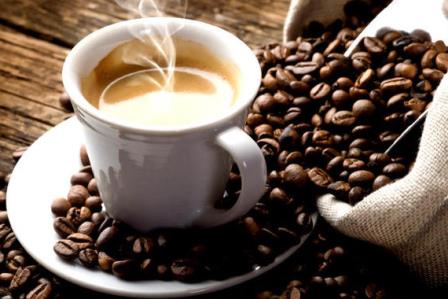
 Umberto Mucci
Umberto Mucci
The Italian Way: Addressing the Italian Stereotypes, Myth 4 - il Caffe'
- WTI Magazine #62 Jun 12, 2015
-

 Umberto Mucci
Umberto Mucci
WTI Magazine #62 2015 June, 12
Author : Elda Buonanno Foley Translation by:
While walking along the street in the early morning, in any Italian corner you would smell the omnipresent scent of freshly made coffee! Our philosophy in regards to coffee has no equal: it is not simply a nice and tasty short drink. It represents the social glue, the community sense of belonging, the act of sealing any deals and agreements of any sort or shape. Italians are extremely proud, maybe almost integralist, when talking about their coffee: the supreme Italian drink can only be taken in the appropriate little cup (tazzina) - no mugs are allowed - and has its "do's" and "don'ts".
We start our daily routine with a coffee at home or at the bar (to be noted that Italian Bars are places of social gathering). At home, we would make coffee with our "perfect" moka: schools of thought indicate that the moka does not need to be washed with soap, but only rinsed with water, thus keeping the fragrance of the coffee. The ritual of making the coffee at home has an almost religious nature: the level of the water needs to get to a certain point of the filter, the coffee – powder- poured has to be piled up but not pushed too much, and, once the coffee is ready, you would let it "sit" in the moka for an extra moment to gather all its richness!
If, instead, you go to one of the thousand Bars located in any city, you have peculiar choices to make: you could chose amongst a caffè "corto" (one shot at any American DD or Starbucks), "lungo" (two shots), "macchiato"(with a touch of milk- possibly the foam), "freddo" (only in the hot seasons), "ristretto"( which is one shot but feels like a huge kick for your day!), "corretto"( this is an interesting choice to be done only at certain times of the day, maybe to digest a heavy meal, as you would add liquors – Mistrà, Anice or Grappa). Whatever the choice made, the coffee "break" even if it is short, represents a social moment, an instant of relaxation, of taking time to gather thoughts, of discussing private and public issues.
Transcending the simple nature of being a quick drink is also represented by an important testimony that is found in some Italian cities: the Caffe' Letterario are places where, especially decades ago, artists, musicians, painters, philosophers, politicians, social activists would meet to discuss relevant political, human and social matters while drinking cups of coffee. These were, and are, historical places, where actions, and even manifestos for the democracies in many countries, were taken or written: think about one of the oldest in Italy – Caffè Greco in Rome. In this Caffè, that dates probably as far back as 1760 (not too far from Piazza di Spagna), worldly known people would gather and spend time to discuss important matters: as the famous French writer Montesquieu remembers "it is such a joy to spend day and night in a place where the words become reality, utopia becomes tangible actuality and this happens without leaving your own chair..").
In sum, the coffee or the Caffé are fundamental icons in the Italian life, images of a vibrant past, strong and solid customs of a passionate present and, hopefully, permanent symbols of our brilliant future.